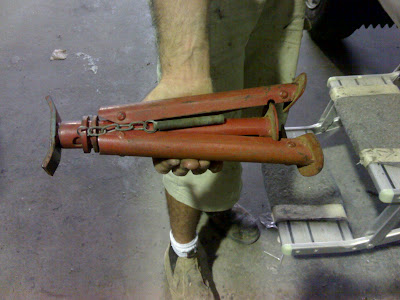Nuts
If I'm without an impact driver, I use the factory socket with a slightly longer bar and support the end of the socket. I carry a folding axle stand for this so you can put more weight on the bar safely. Then the axle stand goes under the truck during the wheel change for extra safety.
This is the axle stand that works for me. If you get one and the spacing holes are too far apart to get the correct adjustment use a couple of pieces of thin plywood as a pad to get the right height for the stand.
This one folds up.
If there is a proper tool for this as was mentioned that sounds great but this works really well and the correct rotational force can be applied to the nut without trying to twist off and damage something.
I can't comment on the dramas you guys are having in freeing these wheel nuts as I have rarely had to use anything longer than 4' and usually the standard bar is OK. One thing I do however is always use some anti-sieze on the nuts. Not normal grease but anti-sieze, never-sieze, kopr-kote, etc,etc. and not just on the threads but make sure it goes on the beveled face that makes contact with the wheel. This is normally why they freeze. Also everything tightens so much easier this way. Then go ever the nuts again after the wheels have settled in (maybe a 100kms or so) and nip them up AGAIN. This last step is really important.
IMO correct torque even with a Tension Wrench cannot be achieved when the beveled surface is dry and friction comes into play.
I only use a rattle gun to spin the nuts on cause it's easy then do the final tighten with a bar maybe a little longer than standard. Don't push the socket on all the way and scratch the paint. Last tip. When you have rolled your wheel over to the axle, how do you lift it up to get it on? Use your slightly longer bar and the standard bar. Put each bar a couple of inches under the tyre, on either side , and use as a lever to lift the wheel straight up. There is a knack to it but no muscle is really required. When you get it you can do the lift and rotate to line the studs up all in one smooth movement.
The anti-seize is something I was shown so long back I can't remember but I've never read anything to the contrary. I stress this is my opinion and please someone set me straight if it's not best practice.



